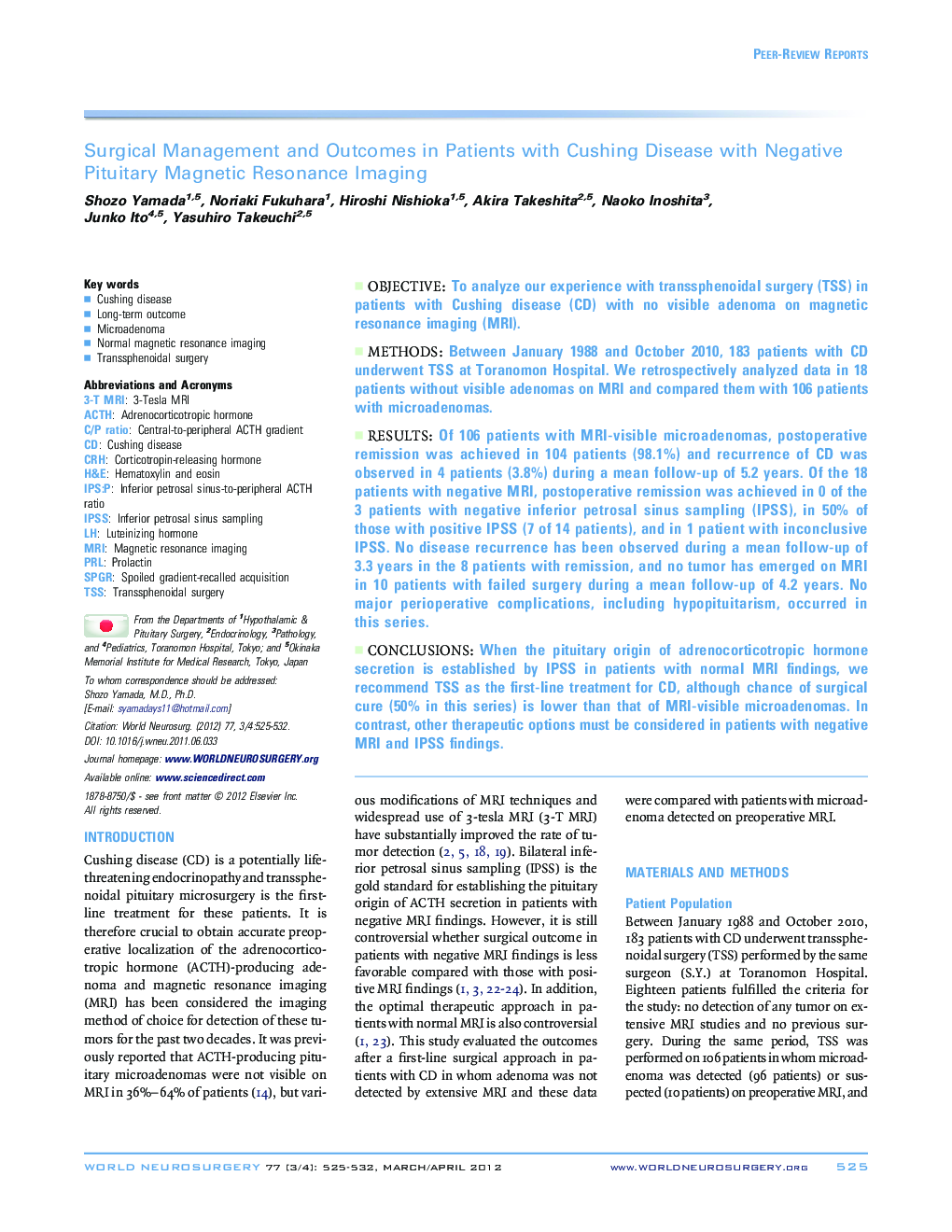| Article ID | Journal | Published Year | Pages | File Type |
|---|---|---|---|---|
| 3096902 | World Neurosurgery | 2012 | 8 Pages |
ObjectiveTo analyze our experience with transsphenoidal surgery (TSS) in patients with Cushing disease (CD) with no visible adenoma on magnetic resonance imaging (MRI).MethodsBetween January 1988 and October 2010, 183 patients with CD underwent TSS at Toranomon Hospital. We retrospectively analyzed data in 18 patients without visible adenomas on MRI and compared them with 106 patients with microadenomas.ResultsOf 106 patients with MRI-visible microadenomas, postoperative remission was achieved in 104 patients (98.1%) and recurrence of CD was observed in 4 patients (3.8%) during a mean follow-up of 5.2 years. Of the 18 patients with negative MRI, postoperative remission was achieved in 0 of the 3 patients with negative inferior petrosal sinus sampling (IPSS), in 50% of those with positive IPSS (7 of 14 patients), and in 1 patient with inconclusive IPSS. No disease recurrence has been observed during a mean follow-up of 3.3 years in the 8 patients with remission, and no tumor has emerged on MRI in 10 patients with failed surgery during a mean follow-up of 4.2 years. No major perioperative complications, including hypopituitarism, occurred in this series.ConclusionsWhen the pituitary origin of adrenocorticotropic hormone secretion is established by IPSS in patients with normal MRI findings, we recommend TSS as the first-line treatment for CD, although chance of surgical cure (50% in this series) is lower than that of MRI-visible microadenomas. In contrast, other therapeutic options must be considered in patients with negative MRI and IPSS findings.
